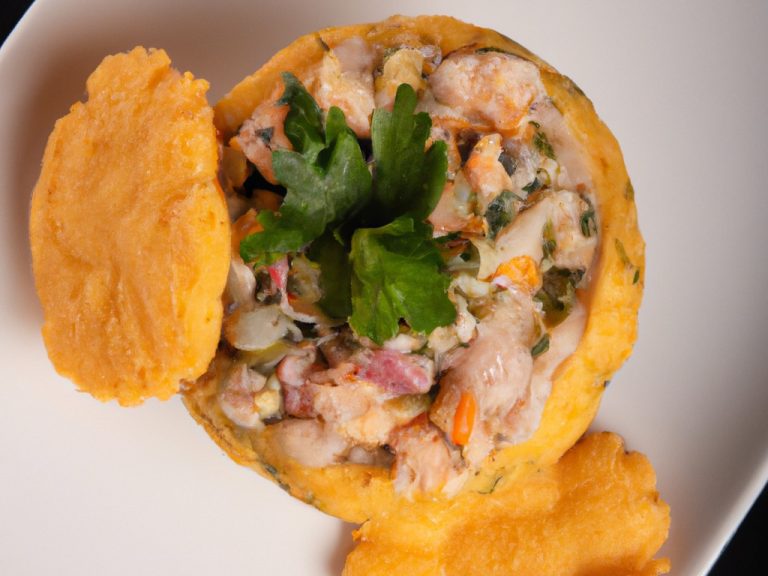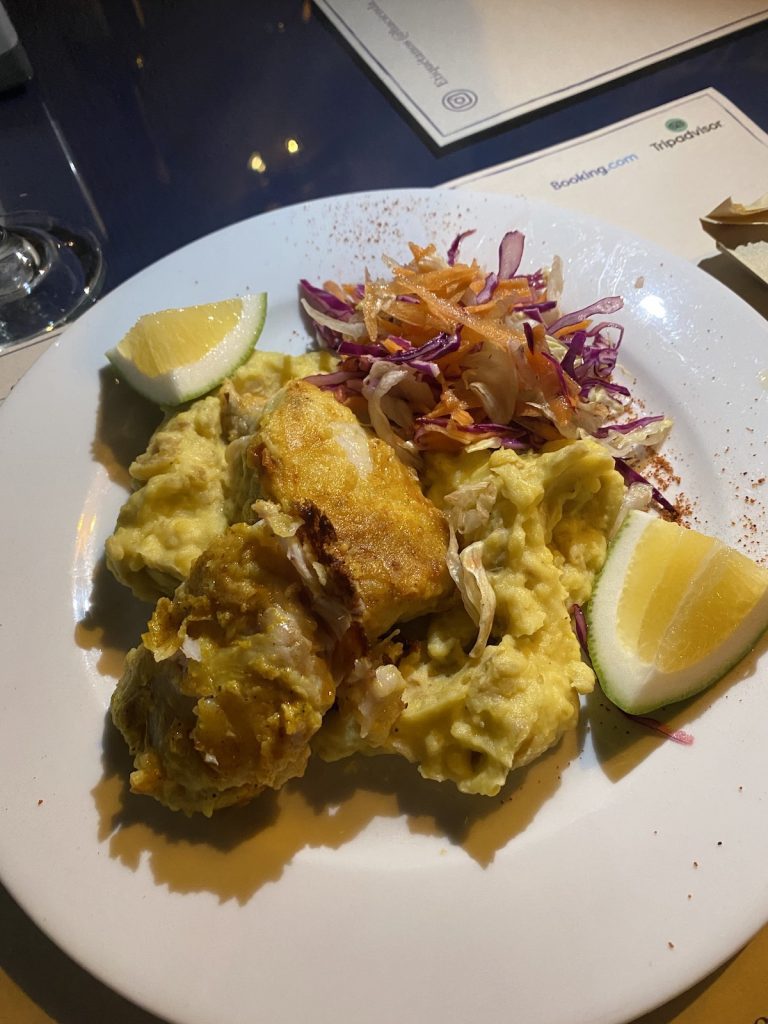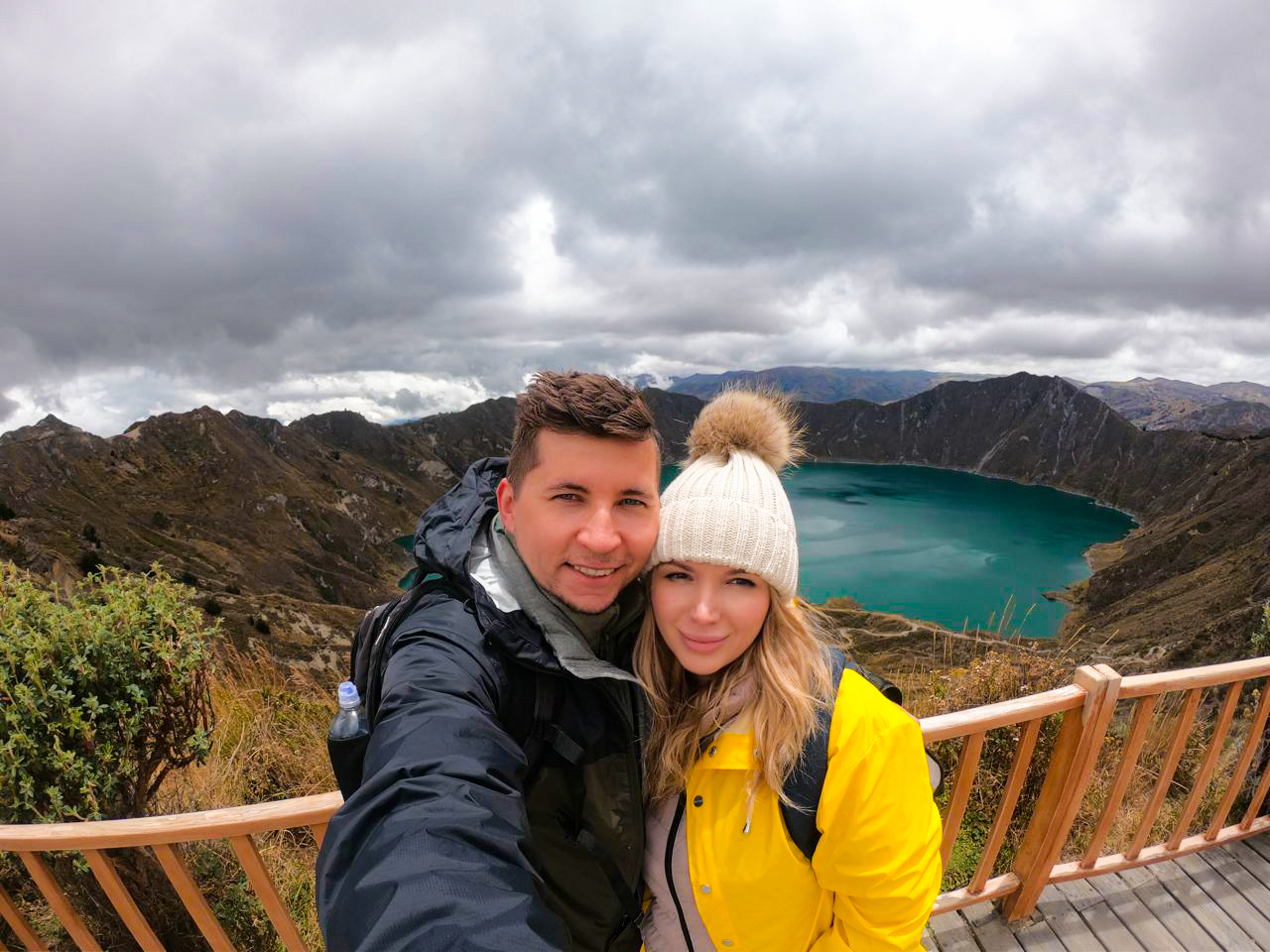Corviche is a delightful Ecuadorian dish made with green plantain balls filled with a savory albacore-peanut mixture. While it may sound unusual to some, it holds a special place in the hearts of Ecuadorians and stands as a symbol of their rich culinary heritage.
In this article, we’ll share our gastronomic experience in Ecuador, shining a spotlight on this deep-fried fish and plantain dish and the flavors that make it unforgettable.
When I first tried corviche in Ecuador, I was hesitant – but it quickly became my favorite snack! Don’t miss out on these authentic food experiences. Get a FREE custom itinerary from local experts who know the best spots for traditional Ecuadorian cuisine. Your quote request helps support this blog and local Ecuadorian communities!
How To Make Corviche
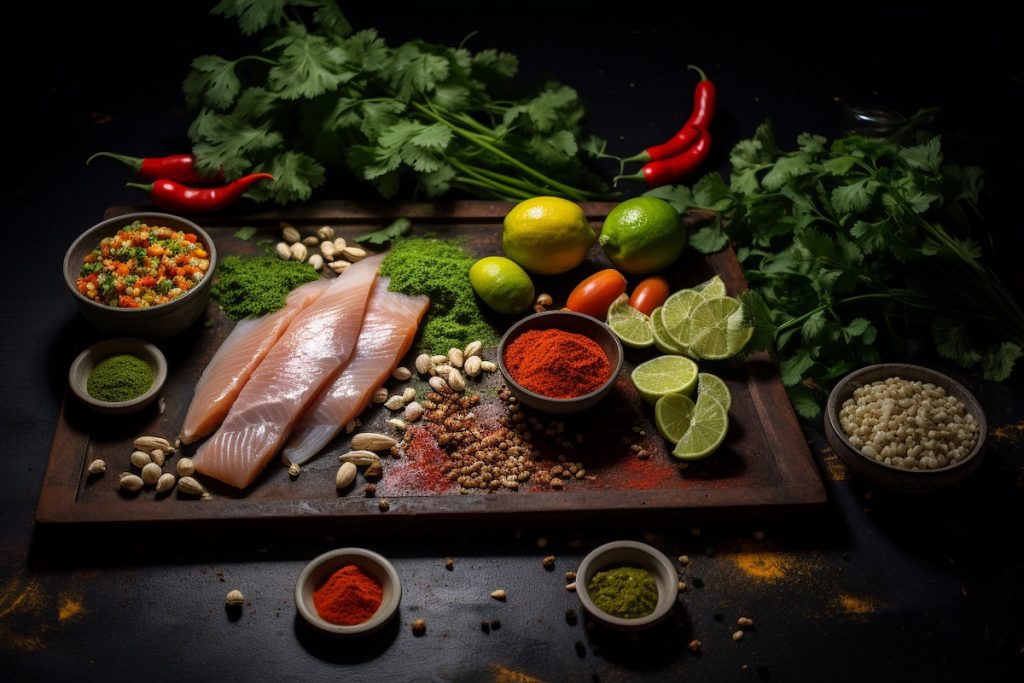
Corviche’s main ingredients include:
- Green plantains (platano verde)
- Albacore tuna (or other seafood options)
- Peanuts
- Onion
- Bell pepper
- Cilantro
- Lime juice
- Garlic
- Cumin
- Achiote (annatto) seeds
- Oil for frying
The traditional preparation of Corviche involves a few key steps, starting with peeling and mashing green plantains until they form a dough-like consistency.
Next, the filling is made by combining albacore tuna with a delicious blend of peanuts, chopped onion, bell pepper, cilantro, lime juice, garlic, cumin, and achiote seeds, creating a flavorful mixture.
Once the plantain dough is ready, a portion is shaped into a ball, flattened into a disc, and a spoonful of the albacore-peanut filling is placed in the center. The dough is then carefully folded and sealed to keep the filling inside.
Finally, the Corviche is deep-fried to perfection, resulting in a crispy, golden exterior that contrasts beautifully with its rich, flavorful filling. This process ensures that each bite delivers a taste of Ecuador’s culinary heritage.
Corviche Variations and Twists
For those seeking diverse flavors, albacore tuna can be substituted with shrimp or crab, offering a different yet equally delightful seafood experience. Cooks often experiment with spices and seasonings, adding their own twist to elevate the dish’s flavor profile.
Adventurous chefs have taken it a step further by introducing alternative fillings like cheese or vegetables, catering to different palates. Additionally, some have infused artistic flair, presenting Corviche in creatively crafted shapes or sizes, making this Ecuadorian delicacy not only a treat for the taste buds but also a visually enticing dish.
Tasting Corviche
Corviche has an exceptional taste, often attributed to the peanut butter used in the recipe. I could only manage two medium-sized Corviche since they are quite filling.
We sampled Corviche from a few different restaurants across Ecuador, but the best one we had was prepared by a local during our tour. He used fresh tuna, although Corvina (a white fish) can also be used.
In restaurants, Corviche is often served with various sauces, and in some places, it comes with onion salad and mayonnaise.
At first, we were hesitant to try this dish, but as we continued our journey through Ecuador, Corviche quickly became our favorite snack. Thinking about it makes us want to return to Ecuador now!
Some of my best food memories in Ecuador came from local guides sharing their favorite dishes with us. Get a FREE personalized itinerary from local experts who’ll connect you with authentic experiences like trying homemade corviche. Your support helps this blog and local Ecuadorian businesses!
Where To Get The Best Corviche
Below is a list of places where you can get corviche. You can also buy them on the streets and along the coast if you are in the coastal region.
- La Ronda, Quito
- Malecon 2000, Guayaquil
- Ayampe
- Esmeraldas
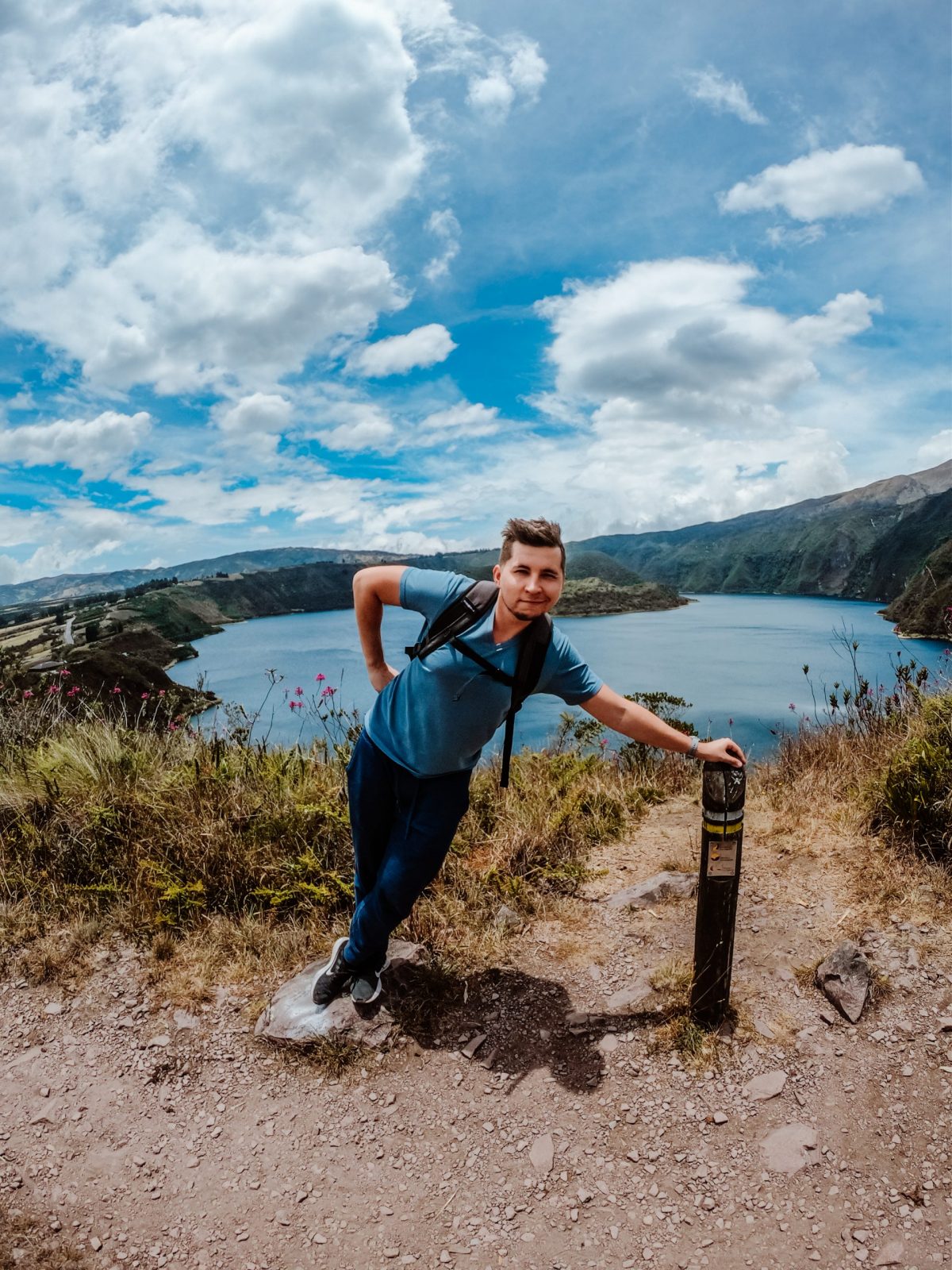
Planning trip to Ecuador?
My wife and I rented a car for 15 days and traveled from the northern part of Ecuador to the south, visiting amazing cities like Quito, Otavalo, Baños, Cuenca, and Guayaquil. Along the way, we explored iconic places such as Cotopaxi National Park, Quilotoa Lake, and many more breathtaking destinations.
Not many blogs cover traveling in Ecuador in detail, so I spent nearly three weeks creating this comprehensive Ecuador travel guide based on our trip. It’s packed with everything you need to know, and honestly, I consider it the best free travel guide about Ecuador out there.
If you’re planning a trip to Ecuador, don’t forget to use my link for discounted hotel prices through Booking.com. It’s a great way to support my blog while saving money on your accommodations!
Conclusion
Corviche is a true representation of Ecuador’s rich culinary heritage and coastal charm. Its unique taste delights both locals and visitors, making it more than just food—it embodies Ecuadorian culture and the pride of its coastal communities. This traditional dish is something to be cherished and passed down through generations.
As you explore Ecuador, don’t miss the chance to try Corviche and savor its unique, delectable flavor. And be sure to check out our big guide on Ecuadorian food for more culinary discoveries!

